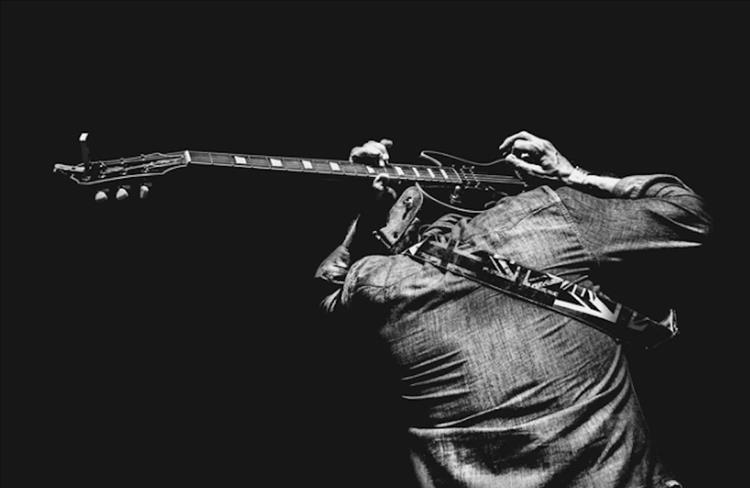There are a variety of different guitar strumming techniques that we can approach the guitar with – Let’s explore!
Over 100,000 guitar-learners get our world-class guitar tips & tutorials sent straight to their inbox: Click here to join them
In this free lesson you will learn…
- 8 tips for strumming
- What scratch strumming is & why it’s important
- How to subdivide
- How to stop your strings from vibrating when you don’t want them to!
Let’s Take Your Guitar Strumming Techniques To The Next Level!
One of the easiest things about learning how to play the guitar is figuring out how to make chords.
- It doesn’t seem very simple at the beginning, but once you figure out how to read a chord diagram, you can figure out how to make any chord.
- Then it’s just a matter of being able to configure your fretting hand to get all the necessary strings to sound.
Strumming is a completely different story. Getting good tone, much less multiple good tones, out of the guitar, can take a lot of practice.
There are tons of strumming hand questions that don’t have one answer:
- Do I use a pick?
- How loose should my arm be?
- How do I strum the right number of strings every time?
- What’s a strumming pattern?
So if you are a beginner to intermediate guitarist, here’s a mini-course on guitar strumming techniques for you.
Most of these lessons are going to involve picks, so if using and holding picks are an issue for you, check out these excellent lessons first!
- If you work on and master these guitar strumming techniques, you’ll improve the tone you produce on the guitar.
- From there, strumming will begin to feel a lot more natural.
- It takes time to perfect different guitar strumming techniques, so let’s get started right now!
Guitar Strumming Techniques: Basic Rhythm
In teaching guitar, the vast majority of issues we see people having with strumming the guitar are related to them wanting to blow past some crucial fundamental concepts.
We all want to blow past it! We just want to rock out!
Don’t try to tell us that John Mayer is standing onstage counting to four all the time! Does Joe Bonamassa sit around all day counting to four?
Well… yeah, they do.
The only difference between you, beginning-to-intermediate guitarist, and Joe Bonamassa, killer blues guy, is that the killer blues guy has been counting to four for so long that the whole counting process has become internalized and automated.
If you want to rock out, you simply cannot skip over the very unglamorous stuff that’s about to happen here.
Learn 12 EASY beginner chords with our popular guide

✅ Stop struggling. Start making music.
✅ Learn beginner-friendly versions of every chord.
This is our most popular guide and it will improve your chord ability quickly! 😎
Get your own personalised guitar-learning plan 🎸
Get a custom guitar-learning plan here: Click here for GuitarMetrics™
World-Class Guitar Courses 🌎
Learn from the world's best guitar educators: Click here for our guitar courses
The Beat & How To Divide It
To begin, let’s review something that you probably already know: you keep the beat on the guitar by strumming down.
You tap your foot along with the beat, and when your foot goes down, your hand goes down.
This is called a quarter note strum because measures (repeating groups of beats) tend to have four beats, so a quarter note takes up a quarter of the time in the measure.
It’s a bit abstract, but stay with us.
- When we strum up in between those quarter note strums, we are dividing the beat.
- In straight rhythm, we’re dividing the beat in half. That’s called an eighth note strum because if we hit the strings each time we strum down or up, we’re dividing the same four-beat measure into eight equal parts.
So, the basis of all guitar strumming techniques is this idea of dividing the beat. To get used to strumming and counting together, try strumming eight measures of any chord you choose with a straight down-up continuous strum, tapping your foot and counting like this:
One & Two & Three & Four & Two & Two & Three & Four & Three & Two &… all the way up to eight.
Use a metronome if you like, but don’t skip the counting!
Subdividing The Beat & Keeping It Loose
There are a lot of songs that have a slow to moderate beat.
- In order to keep those songs moving, it’s necessary to subdivide the beat.
- Subdividing the beat also happens quite a bit in funky music.
To subdivide the beat, you’ll strum down eight times in a four-beat measure.
This is called a sixteenth note strum.
To keep a sixteenth note strum without losing the beat, tap your foot only on the beat and count like this: One ee and a Two ee and a Three ee and a Four ee and a…
The faster you strum, the more important it is to keep your wrist loose to maintain good tone.
Justinguitar does a good job of breaking this down in the context of funk strumming, but it really applies across the board!
In practicing guitar strumming techniques related to the sixteenth note strum, repetition is key.
If it’s boring, that’s a great sign! That means it’s getting easier.
- Things in music tend to get tedious before we get good at them.
- If you are able to sustain a sixteenth-note strum on any chord without changing your tempo or losing track of the beat, it’s time to level up that exercise!
You’ve been counting One E & a Two E & a… and when we do that, we naturally strum a little louder on the beat. That should feel more or less natural.
Try the same sixteenth-note strum with the accented beat elsewhere by counting like this: One ee and a Two ee and a. Try One ee and a Two ee and a, and try One ee and a Two ee and a.
Master that, and you’re on your way to mastering the ability to keep the beat no matter which guitar strumming techniques or rhythms you choose!
Pro-Tip: We can’t say it enough. Work on the basic beat-keeping skills as much as you can stand!
- All the other rhythms we want to try fall apart if we don’t have the ability to keep track of where the beat is.
- Keep counting and strumming, and it will become much easier to do everything else!
Guitar Strumming Techniques: Calypso Style
The idea of strumming patterns is a little bit misleading, because once you are keeping track of the beat as we’ve discussed above, the rhythm you use for any given song is just a matter of what kind of groove you want to set.
With that in mind, you can and should develop your own strumming patterns by selecting which down and up strums you want to hit the strings and which you want to miss. Repeat that over a measure or two, and you have a pattern.
After you’ve developed some simple strumming patterns, like these:
- Down, down-up, down-up, down-up
- Down, down, down, down-up
- Down, down-up, down, down-up
You’ll want to incorporate a little syncopation into the mix.
Syncopation is when accented or stronger sounds happen on either side of the beat.
The calypso strum is a basic syncopated strumming pattern that’s commonly used in some form across different genres of music, including Rock, Folk, Blues, and of course Calypso.
To do a basic calypso strum, all you need is this pattern:
Down, down-up, -up, down-up.
- This is where it’s important to use your beat-keeping skills.
- Those two up strums in a row look and feel a little strange at first.
- To get the calypso strum to slot properly into the measure, make sure that you tell yourself to drop your strumming hand in between those two up strums.
You can even say it to yourself: down, down-up, drop-up, down-up.
With a little practice, you’ll get used to syncopated guitar strumming techniques!

Guitar Strumming Techniques: Straight Or Swing?
Now that you’ve got down how to count and divide/subdivide the beat, and you have a syncopated calypso strum under your belt, it’s time to talk feel.
So far, when we’ve tried dividing the beat, we’ve divided into two equal parts: one and two and three and four and.
- This is called straight rhythm, or straight eighths. When you strum in straight rhythm, it sounds like marching, very even.
- You can hear straight eighths when the drummer in a recording is playing a train or tommy-gun style song.
- In contrast, swing divides the beat differently, resulting in a different feel, like this song.
With swing rhythm, the basic beat remains the same, but your down strum is longer than your up strum.
If you imagine that your strumming arm is heavy, it helps to create the swing feel.
- In terms of counting, swing technically divides the beat into three parts, and the down strum takes up the first two thirds.
- The up strum takes up the last third of the beat. To ease your way in, you can count One & a Two & a Three & a Four & a.
- Once you get it going, you can just count One-a Two-a Three-a Four-a.
The fellow in this video still counts One and Two and… but otherwise this is a decent video explanation of the difference between straight and swing rhythm.
You do not have to know how to read music to practice the different feels of swing and straight.
Below is an exercise that you can use to internalize and really understand the difference between swing and straight rhythm.
Once you have a little command of these two guitar strumming techniques, you can begin to decide which to use in any given song.
- This is a four-measure exercise. The idea is to keep the tempo (the speed of the beat) the same, just dividing the beat differently.
- In the first two measures, you’ll divide the beat evenly in two, using the straight rhythm.
- In the second two measures, you’ll divide the beat in three, with the down strum taking the first 2/3 of the beat and the up strum taking the last third.
Download our lead guitar cheat-sheet to make things easier
It's hard to understand which scales work with which keys.
So we created a cheat-sheet! A key and scale-finder that you can use again and again.

Get your personalised guitar-learning plan 🎸
Get a custom guitar-learning plan here: Click here for GuitarMetrics™
World-Class Guitar Courses 🌎
Learn from the world's best guitar educators: Click here for our guitar courses
Guitar Strumming Techniques: Stopping the Sound
With any of these guitar strumming techniques, patterns, or feels; until you learn how to stop the sound, everything you strum has a certain sameness.
- When you stop the sound of the guitar is just as important as when and how you start the sound, and it is endlessly enjoyable to experiment with.
- We’ll explore two related but separate guitar strumming techniques that expand your sound by limiting it.
Incorporating these tricks will make your strumming sound more percussive, groovy, and interesting.
“Unsqueezing” Your Chords
When you play a chord, your fretting hand feels like it’s grabbing or squeezing the chord.
If nothing else, that’s what it feels like when you’re comfortable with a chord.
- You can get all fretted strings to stop ringing immediately by just releasing the squeezing pressure in your fretting hand. Try it with the D chord!
- Leave your fingers on the string; all you have to do is “unsqueeze” the chord, and the only sound you have left over is the D string. Let’s figure out a way to get that to stop while we’re at it.
- While you’re unsqueezing the chord, take your fourth finger and lay it across the strings, making sure to touch the D string. This will stop it from ringing.
Try this technique with your other open chords, using any finger on your fretting hand that is unoccupied with the chord to stop open strings from ringing.
Combining this with your other guitar strumming techniques will help your chords to sound cleaner, less mushy, and more punchy!
Scratch Strumming
Scratch strumming is what you do when you want only percussive noise to come out of your guitar, and no notes or pitch.
Check out the very beginning of this awesome Crosby, Stills, & Nash song to hear an example of scratch strumming.
- To perform this technique, lay all the fingers of your fretting hand across the strings so that the fingers are touching the strings but not squeezing or putting any pressure on them.
- When you strum your guitar, you should hear the scratching sound without any pitch. If there’s some pitch (notes) coming out, you’re either squeezing too tightly or not touching the strings. Adjust your pressure accordingly, it takes a little getting used to.
- Make sure your fretting hand is close to the nut/headstock of your guitar.
If you go up the neck, you may run into some harmonics. These are great if you mean to do it, but not what you want in scratch strumming.
Mixing and Matching Guitar Strumming Techniques
All of the guitar strumming techniques we’ve gone over in this lesson are used in some kind of combination all the time, from counting to syncopation and scratch strumming.
This is true across all styles and genres of music. Keep coming back to these basics, and you’ll eventually be able to develop your own combination and sound!
Recommended Resources
If you enjoyed this free guide to guitar strumming techniques, you’ll love our other free content below! Enjoy, and keep practicing!
- How To Play In Time
- Rhythm Guitar Lessons
- Guitar Rhythm Exercises
- Guitar Exercises
- Alternate Picking
What Type of Guitarist Are You?
Take our 60-second quiz & get your results: Take The Quiz
Join the world's best online guitar school 🌎
- Get your own personalised guitar learning plan (customised just for YOU).
- World-class online guitar courses. Learn at your own pace.
- Community Campus & Learning Forum - A friendly community! Connect with our team & students. 😊
- Beginner Song library with chordsheets, tabs and tips. (Songs suitable for all levels!)
- Regular live streams, seminars and Q&A sessions - Learn from world-class guitar educators. Get all your questions answered!
Click here to learn more about National Guitar Academy membership 
Cool Guitar T-shirts 😎
Look cooler! Check out our merch: Click here to see our merch store
Want free guitar tips and video lessons delivered to your inbox?
Join over 100,000 guitar-learners and subscribe to our guitar-tips-by-email service. (It's free.)
We'll send you a series of lessons that will move you to the next level of your guitar journey.
Learn how everything fits together quickly, easily and effectively. We share ninja tips (for instant fun!) but also timeless fundamentals that will deepen your understanding.

Popular Lessons
How To Learn Guitar: An 11-Step Programme For Beginners
How To Choose The Perfect Beginner Guitar
More Cool Guitar Stuff
Learn about National Guitar Academy: About Us
Join us on Facebook for daily guitar tips.
Listen to our Learn Guitar Podcast for rapid guitar progress.
Check out our free chord lessons.
Get our best guitar tips & videos
Where should we send it?
Where should we send it?
Get our best guitar tips & videos
















